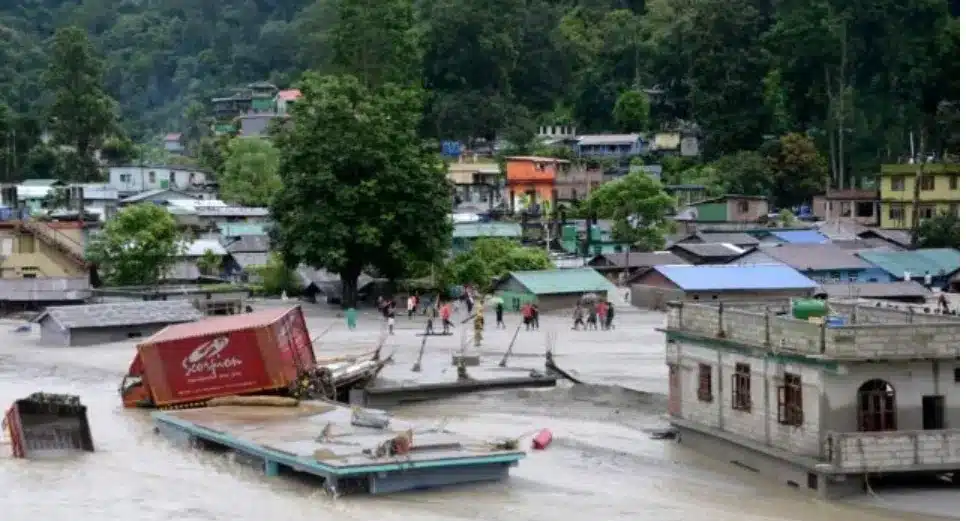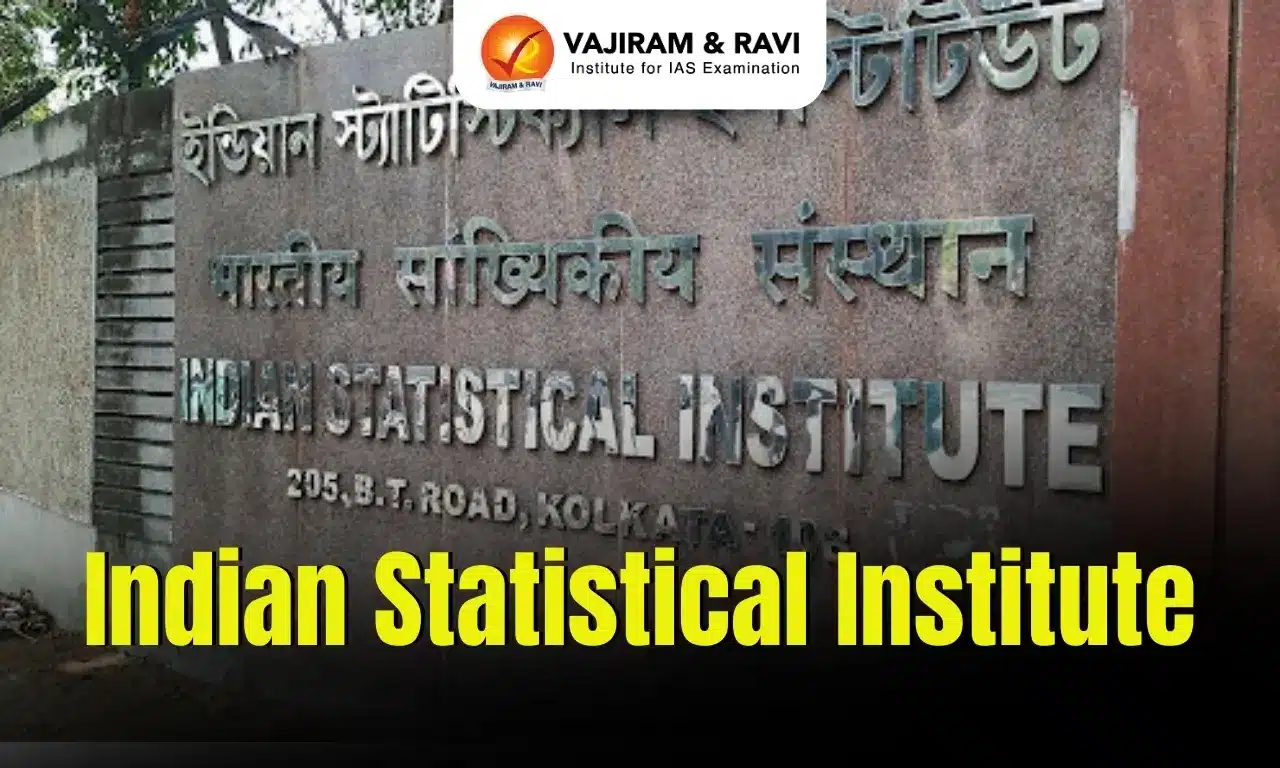What’s in today’s article?
- Why in News?
- What is National Green Tribunal (NGT)?
- Structure & Members of NGT
- What are Powers of NGT?
- what are Glacial Lake Outburst Floods (GLOFs)?
- How did South Lhonak Lake Become Susceptible to GLOF?
- What is North East Space Application Centre (NESAC)?
Why in News?
The Sikkim government has informed the National Green Tribunal (NGT) that more than usual heavy rainfall — possibly a cloudburst — had preceded the glacial lake outburst flood (GLOF) event in the South Lhonak lake.
The state government has based its conclusion on a report by the North East Space Application Centre (NESAC).
At least 40 people were killed 76 went missing in Sikkim in October 2023 after the South Lhonak Lake – a glacial lake situated in the state’s northwest at 17,000 ft – burst due to incessant rains.
What is National Green Tribunal (NGT)?
- The National Green Tribunal has been established in October 2010 under the National Green Tribunal Act 2010.
- It was established for effective and expeditious disposal of cases relating to environmental protection and conservation of forests and other natural resources.
- It is a specialized body equipped with the necessary expertise to handle environmental disputes involving multi-disciplinary issues.
- India became the third country in the world to set up a specialised environmental tribunal, only after Australia and New Zealand.
Structure & Members of NGT
- The Principal Bench of the NGT has been established in the National Capital – New Delhi, with regional benches in
- Pune (Western Zone Bench); Bhopal (Central Zone Bench); Chennai (Southern Bench) and Kolkata (Eastern Bench).
- The Chairperson of the NGT is a retired Judge of the Supreme Court, Head Quartered in Delhi.
- Other Judicial members are retired Judges of High Courts. Each bench of the NGT will comprise of at least one Judicial Member and one Expert Member.
- Expert members should have a professional qualification and a minimum of 15 years’ experience in the field of environment/forest conservation and related subjects.
What are Powers of NGT?
- The Tribunal is not bounded by the procedure laid down under the Code of Civil Procedure, 1908. It is guided by principles of natural justice.
- The Tribunal is mandated to make and endeavour for disposal of applications or appeals finally within 6 months of filing of the same.
- NGT has the power to hear all civil cases relating to environmental issues and questions that are linked to the implementation of laws listed in Schedule I of the NGT Act.
- It should be noted that the NGT has not been vested with powers to hear any matter relating to
- the Wildlife (Protection) Act, 1972,
- the Indian Forest Act, 1927 and
- various laws enacted by States relating to forests, tree preservation etc.
- It should be noted that the NGT has not been vested with powers to hear any matter relating to
What are Glacial Lake Outburst Floods (GLOFs)?
- Glacial lakes
- Glacial lakes are large bodies of water that sit in front of, on top of, or beneath a melting glacier.
- As a glacier withdraws, it leaves behind a depression that gets filled with meltwater, thereby forming a lake.
- Glacial lakes are formed when a glacier erodes the land and then melts, filling the depression created by the glacier.
- They are typically found in high-altitude or polar regions where glaciers exist.
- The more the glacier recedes, the bigger and more dangerous the lake becomes.
- Glacial lakes are generally divided into two main groups:
- Ice-contact lakes: These lakes have glacier ice that terminates in the lake water.
- Distal lakes: These lakes are distant from glaciers or ice sheets, but are still influenced by their presence.
- About GLOFs
- Glacial lakes are mostly dammed by unstable ice or sediment composed of loose rock and debris.
- In case the boundary around them breaks, huge amounts of water rush down the side of the mountains, which could cause flooding in the downstream areas — this is referred to as a GLOF event.
- Hence, GLOFs are disaster events caused by the abrupt discharge of water from glacial lakes.
- Factors triggering GLOFs
- GLOFs can be triggered by various reasons, including glacial calving, where sizable ice chunks detach from the glacier into the lake, inducing sudden water displacement.
- Incidents such as avalanches or landslides can also impact the stability of the boundary around a glacial lake, leading to its failure, and the rapid discharge of water.
How did South Lhonak Lake Become Susceptible to GLOF?
- With the rising global temperatures, glaciers in Sikkim Himalayan have been melting rapidly, giving rise to many glacier lakes and expanding the already existing ones in the region.
- According to the Sikkim State Disaster Management Authority (SDMA), there are currently more than 300 glacial lakes in Sikkim Himalayan, and 10 (including South Lhonak Lake) have been identified as vulnerable to outburst floods.
- An earthquake of magnitude 4.9 in 1991 near the parent glacier feeding the South Lhonak Lake and the recent earthquake (6.9) in 2011 may have weakened the boundaries of the lake.
- The recentincessant rains caused the lake to burst.
What is North East Space Application Centre (NESAC)?
- NESAC is a regional space center in Umiam, Meghalaya that was established in 2000.
- It is a joint initiative between the Department of Space (DOS) and the North Eastern Council (NEC).
- It provides developmental support to the North Eastern Region (NER) using space science and technology.
Q.1. What is Glacial calving?
Glacial calving, also known as ice calving, is the process of large chunks of ice breaking off from the edge of a glacier, ice shelf, ice front, crevasse, or iceberg.
Q.2. What are the principles of natural justice?
Principles of natural justice are those rules which have been laid down by the Courts as being the minimum protection of the rights of the individual against the arbitrary procedure that may be adopted by a judicial, quasi-judicial and administrative authority while making an order affecting those rights.
Last updated on November, 2025
→ Check out the latest UPSC Syllabus 2026 here.
→ Join Vajiram & Ravi’s Interview Guidance Programme for expert help to crack your final UPSC stage.
→ UPSC Mains Result 2025 is now out.
→ UPSC Notification 2026 is scheduled to be released on January 14, 2026.
→ UPSC Calendar 2026 is released on 15th May, 2025.
→ The UPSC Vacancy 2025 were released 1129, out of which 979 were for UPSC CSE and remaining 150 are for UPSC IFoS.
→ UPSC Prelims 2026 will be conducted on 24th May, 2026 & UPSC Mains 2026 will be conducted on 21st August 2026.
→ The UPSC Selection Process is of 3 stages-Prelims, Mains and Interview.
→ UPSC Result 2024 is released with latest UPSC Marksheet 2024. Check Now!
→ UPSC Prelims Result 2025 is out now for the CSE held on 25 May 2025.
→ UPSC Toppers List 2024 is released now. Shakti Dubey is UPSC AIR 1 2024 Topper.
→ UPSC Prelims Question Paper 2025 and Unofficial Prelims Answer Key 2025 are available now.
→ UPSC Mains Question Paper 2025 is out for Essay, GS 1, 2, 3 & GS 4.
→ UPSC Mains Indian Language Question Paper 2025 is now out.
→ UPSC Mains Optional Question Paper 2025 is now out.
→ Also check Best IAS Coaching in Delhi

















